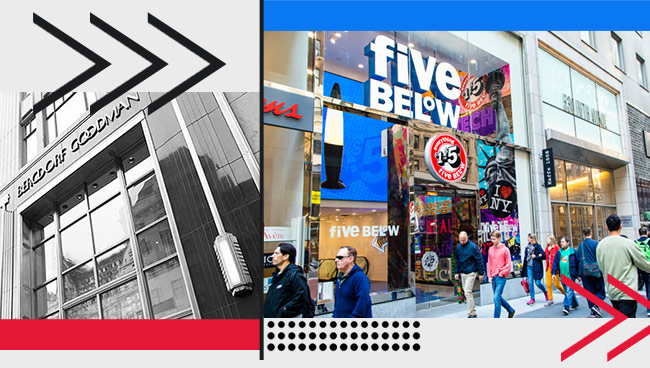During our market research, WSL has noticed a big consumer trend among some of the most expensive shopping districts in the country: democratization. These destinations, from Manhattan to Las Vegas, seem to have acknowledged that the people passing through represent all incomes as well as high and low spending. Our retail research backs it up. Here are five examples.
Where Do High-End Consumers Shop?
You Name It.
Those earning six-figure incomes visit Nordstrom and Walmart; Whole Foods and Lidl. What’s influencing their choices? Inflation, in part. Another factor is the growing number of young consumers who demand fast shopping.
Sometimes they want to browse in Nordstrom or Walmart, and sometimes they want a quick in-and-out.
But we believe the biggest trend shaping shopping districts today is that consumers of all stripes simply want to explore and experience something different – they are on the hunt to find something new.
As a result, we’re seeing more shopping districts, from Manhattan’s bustling Fifth Avenue to the Miracle Mile in Chicago, changing their heritages and adding lower-priced chains to their high-end mixes.
We Call This the Democratization of Retail
Our 2023 How America Shops® research backs up this market trend:
- While one-third of consumers earning $100,000 or more shop prestige department stores, 80% shop Walmart.
- 53% of high earners make purchases at Dollar Tree, browsing the aisles alongside the 72% who make less than $50,000.
- As many high-income shoppers buy their groceries at Aldi (41%) than at Whole Foods (39%).
These 5 Shopping Districts Are Democratizing Retail
During our Retail Safari® observations, the scouts at WSL have identified a number of prominent shopping districts that have begun filing empty spaces with retailers accessible to everyone. This includes those average-earners who routinely walk through these retail centers such as commuters and tourists.
We applaud the landlords, planners and retailers of these communities for supporting the needs of all shoppers. Among what we’ve spotted:
Manhattan’s Fifth Avenue:
One of the toniest streets in America, this home of Bergdorf Goodman, Gucci, Bulgari and (naturally) Saks Fifth Avenue has made room for the more affordable Five Below, Muji, Uniqlo and Zara. And it makes sense: These too, are destination retailers, so now there is something for nearly every one of the millions who stroll Fifth Avenue.
Lake Grove Commons, Long Island, N.Y.:
This shopping center serves the third-wealthiest county in New York state, so higher-priced tenants like Whole Foods and Jared Jewelry have attracted shoppers for years. However, the center also includes more price-accessible and practical tenants, including Five Below (which 28% of high-earners and 38% of low-earners shop) and, for convenience, T-Mobile.
Magnificent Mile/Michigan Avenue in Chicago:
A mix of “high” retailers including Neiman Marcus, Nordstrom, Cartier and Burberry have historically attracted big-spenders in the Windy City. But these big names share the street alongside bargain-hunter alternatives, namely H&M, Marshalls, Ann Taylor Loft and Nordstrom Rack. (It’s too bad Water Tower Place rejected Target in 2021.)
Las Vegas Strip:
The Strip, much like the Miracle Mile, attracts many walks of life and its shopping lineup now reflects that. Today’s Strip includes Target and Chanel, Ross and Cartier, T.J. Maxx and Prada. And for super low-priced treasure seekers, a $10 or Less store is less than one mile from Treasure Island.
Beacon Hill and Newberry Street, Boston:
The historic Beacon Hill is known for its Bulgari, Burberry and Hermes boutiques. But shoppers who can’t afford those brands can still buy them, thanks to the inclusion of Vintage Taste Boston, a high-end consignment shop that offers lower price points. On Newberry Street, visitors – including roughly 250,000 local university students – can shop in H&M, Zara and Victoria’s Secret, when not peeking into the windows of Armani, Marc Jacobs and Valentino.
What’s Best For All Consumers Is Best For All Retail
These shopping districts acknowledge that they need to change their mixes in order to include a retailer for every consumer, because that’s what makes a shopping center or district a destination.
Democratization won’t bring down the value of high-end shopping districts; it will simply make them more inclusive and give all the shoppers something to buy – which is what smart retail is all about.
Ready to Learn About Other Retail Innovations?
WSL continues to follow the shopper to a surprising mix of retailers, brands and the destinations that house them. To learn more about how retailers and brands are innovating their offerings, visit our Retail Innovators page, which features information about our Retail Safaris®.


